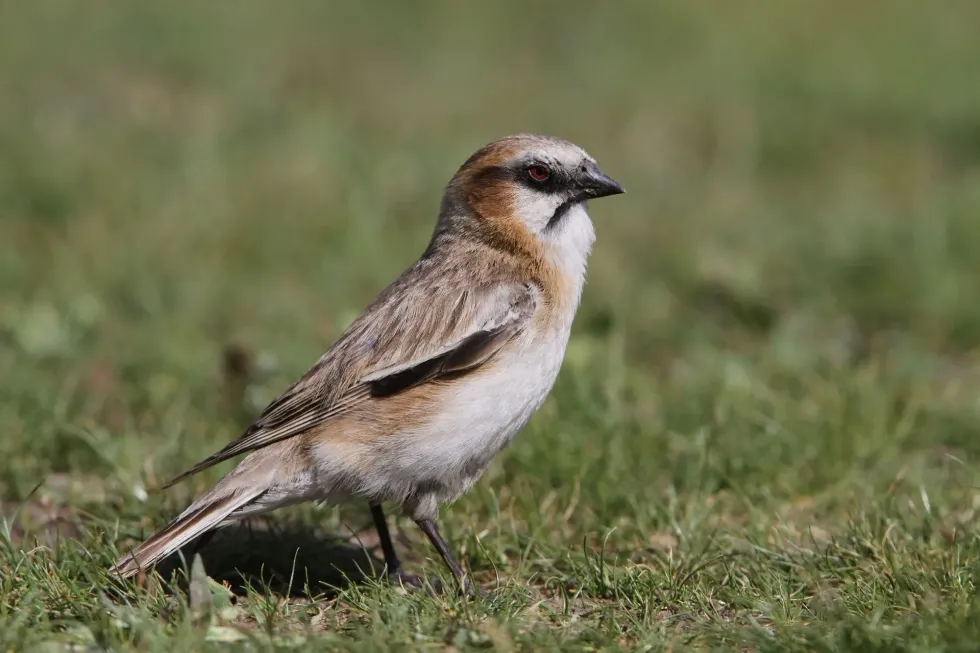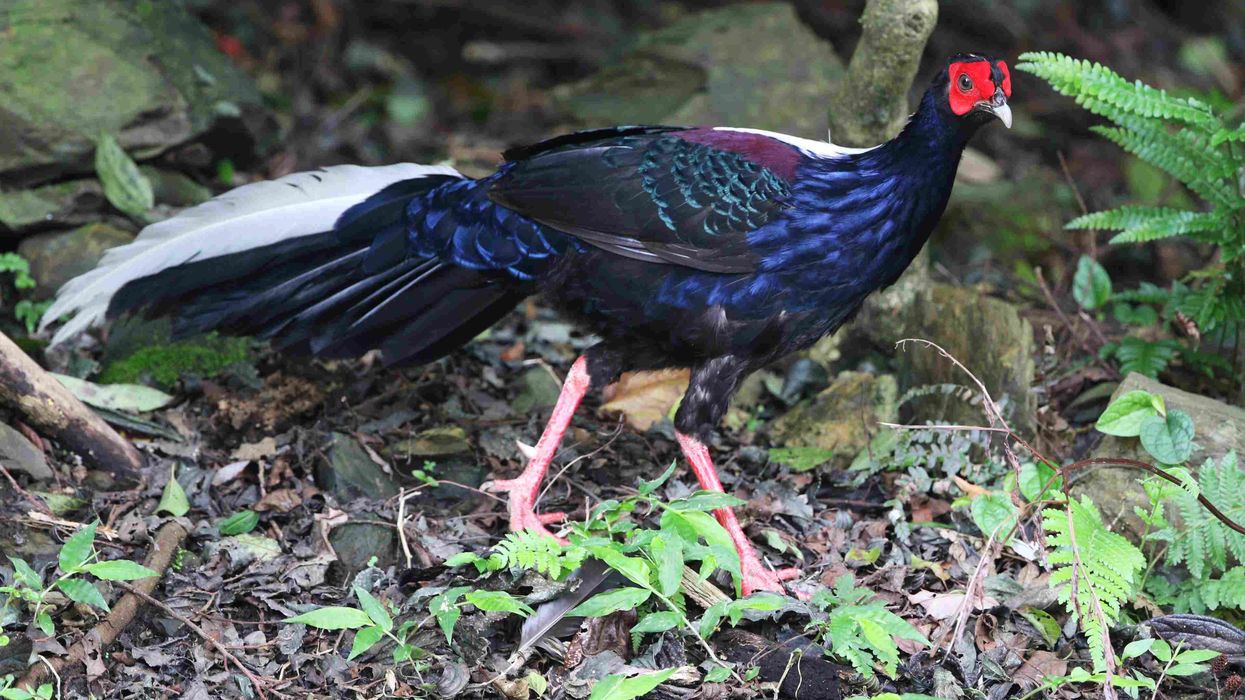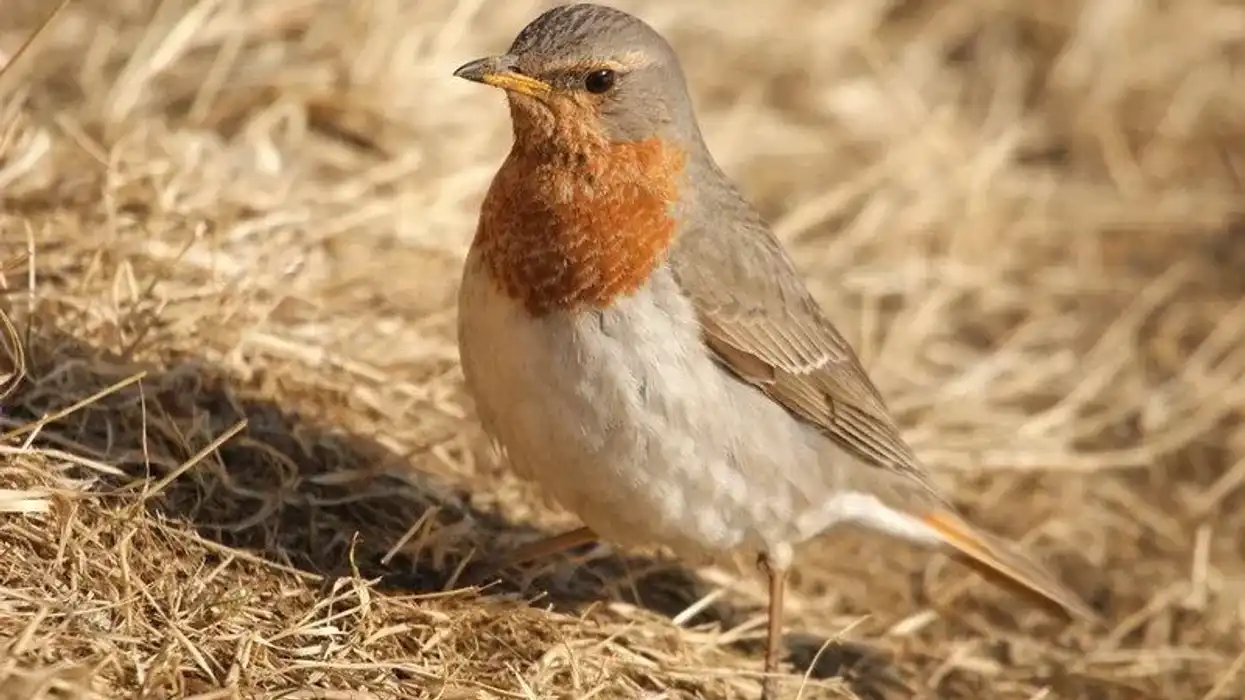Snowfinches are a group of small-sized passerine birds of the Passeridae family (snowfinches, sparrows, and allies). Previous all eight species in this family were placed within the Montifringilla genus. Currently, these species are placed within three genera, Montifringilla, Pyrgilauda, and Onychostruthus.
There are three species within Montifringilla, four within Pyrgilauda, and one within Onychostruthus. The name snowfinch is specifically used for the white-winged snowfinch in Europe.
These snowfinches are mostly brown, white, and gray-colored. Christian Ludwig Brehm, a German ornithologist, introduced the genus Montifringilla in 1828. There are two Latin elements in Montifringilla, 'montis' or 'mons', meaning 'mountain' and 'fringilla' meaning 'finch'.
Jules Verreaux, a French naturalist, introduced Pyrgilauda in 1871 with type species as Pere David's snowfinch. Pyrgilauda is a portmanteau term of the Pyrgita genus (Cuvier, 1817) and Alauda genus (Linnaeus, 1758).
The family Passeridae is also called true sparrows. These birds are mainly seed-eaters, but they also feed on insects. Constantine Samuel Rafinesque, a French polymath, introduced this family in 1815.
If you found these snowfinch facts interesting, then do read about the keel-billed toucan and ovenbird here at Kidadl.
Snowfinch Interesting Facts
What type of animal is a snowfinch?
The snowfinch bird is a small-sized bird of the order Passeriformes and phylum Chordata. This bird is hardy and fearless, and searches for food around ski resorts.
The snowfinch can stay quite close to humans too. This bird, like other birds of the Passeridae, engages in dust bathing and can even bathe in melting snow in winter. A huge number of birds participate in this type of activity, sometimes followed by singing and preening.
What class of animal does a snowfinch belong to?
The snowfinch belongs to the class of Aves of animals.
How many snowfinches are there in the world?
With eight bird species spread across the whole world, the data on the total number of these birds of the world is not known. The current population of the white-winged snowfinch (Montifringilla nivalis (Linnaeus, 1766)) in Europe is estimated to be around 520,000-1,600,000 breeding pairs and a preliminary global population of Montifringilla nivalis (Linnaeus, 1766) is 3,180,000-19,200,000 individuals.
The data on the current population range of other snowfinch bird species is not yet known.
Where does a snowfinch live?
The white-winged snowfinch (Montifringilla nivalis) is a resident of the mountains in southern Europe in the Alps, Pyrenees, Balkans, and Corsica mountains, and also across central Asia through western China. The Blandford's and black-winged snowfinch species is found in Nepal, Pakistan, China, and India. The rufous-necked and white-rumped snow finch species are resident species of Tibet and Central China.
The rufous-necked snow finch winter range includes Bhutan, Nepal, Sikkim, Uttarakhand in India. Pere David's snow finch occupies a range in southern Siberia, northern China, and Mongolia.
The Afghan snow finch species is a resident of Afghanistan. This bird has also been spotted in Turkmenistan. The Tibetan snow finch occupies Tibet.
What is a snowfinch's habitat?
The white-winged snowfinch (Montifringilla nivalis) is found in high altitudes around 4,900 ft (1,500 m) above the ground in bare mountains. Montifringilla nivalis (Linnaeus, 1766) birds use crevices or burrows for nesting. Blandford's, Pere David's, and rufous-necked snow finches are found around the temperate grassland habitat range.
The Afghan snow finch species occurs around mountains at 8,450-9,840 ft (2,575-3,000 m) high above the ground. This species is also found around open hillsides, stony mountain slopes, and plateaux.
The white-rumped snowfinch occupies ranges of rocky habitat around mountain regions. The Tibetan and black-winged snowfinches occupy dry shrublands. These birds are also found in alpine meadows.
Who do snowfinches live with?
The white-winged snowfinch (Montifringilla nivalis) and other snowfinch species live in flocks in winter or in pairs during breeding.
How long does a snowfinch live?
The average lifespan of white-winged snowfinch and all snowfinches is two to three years.
How do they reproduce?
During the breeding season, these birds feed on small anthropods and breeding takes place at high altitudes. The breeding season is between May and July.
They build their nests in rock crevices, burrows built by pikas, marmots like Alpine marmot and Himalayan, ground squirrels. They also build nests in the holes of Williams' jerboas. The female lays around three to four eggs.
What is their conservation status?
The conservation status of these birds of the world is listed as Least Concern.
Snowfinch Fun Facts
What do snowfinches look like?
These birds of the world are small and hardy sparrows. The white-winged snowfinch (Montifringilla nivalis) has brown upper parts with a gray head, white underparts, and a narrow, long white-colored wing panel.
They have a black bill with a black bib that is lost in winter with the bill turning yellow. The head gets paler in winter. The white-edged black tail and black wings can be observed in flight.
Both sexes are similar and all other snowfinches have similar characteristics, except Afghan snowfinches. Female Afghan snowfinches are brown-buff and males are gray-brown with more white on the wings.

* Please note that this is an image of a house sparrow, one of the breeds of the same family as the snowfinch. If you have an image of a snowfinch, please let us know at hello@kidadl.com.
How cute are they?
The white-winged snowfinch species is small and these birds are considered cute.
How do they communicate?
The white-winged snowfinch species and all other species communicate through visuals, calls, and body language.
How big is a snowfinch?
The length of these birds is 5.3-7.5 in (13.5-19 cm). The white-winged snowfinch (Montifringilla nivalis) is 6.5-7.5 in (16.5-19 cm) long. The length of the Afghan snowfinch is around 5.3-5.9 (13.5-15 cm). Sparrowhawks are almost twice the size of the white-winged snowfinch species.
How fast can a snowfinch fly?
The flight speed of the white-winged snowfinch species and others is not known.
How much does a snowfinch weigh?
The average weight of all snowfinches is 0.05-0.12 lb (23-57 g). The white-winged snowfinch (Montifringilla nivalis) is 0.06-0.12 lb (31-57 g).
What are the male and female names of the species?
There is no specific name given to male and female snowfinches.
What would you call a baby snowfinch?
There is no specific name given to a baby snowfinch.
What do they eat?
These birds feed on seeds, insects, and other small arthropods.
Are they dangerous?
No, these birds are not dangerous.
Would they make a good pet?
No, this species would not make great pets. They thrive around mountainous regions and grasslands.
Did you know...
The specific name, nivalis of the white-winged snowfinch species' scientific name is a Latin term meaning 'snow-white' or 'snowy'.
There are seven subspecies under white-winged snowfinch birds.
The specific name, Blandford, in Blandford's snowfinch commemorates William Thomas Blandford, an English zoologist.
Other common names of the Afghan snowfinch are Theresa's snowfinch, Afghan ground-sparrow, Meinertzhagen's snowfinch, and bar-tailed snowfinch.
Does the snowfinch migrate?
These birds of the order Passeriformes do not migrate.
What threats do snowfinches face?
These birds are currently not endangered and they do not face major threats currently.
Here at Kidadl, we have carefully created lots of interesting family-friendly animal facts for everyone to discover! Learn more about some other birds from our canyon wren facts and snowy plover fact for kids.
You can even occupy yourself at home by coloring in one of our free printable bird coloring pages.









